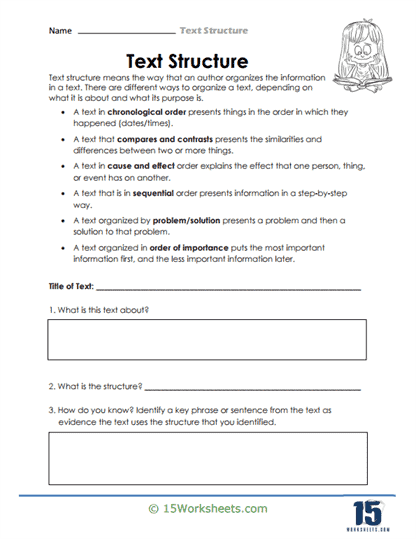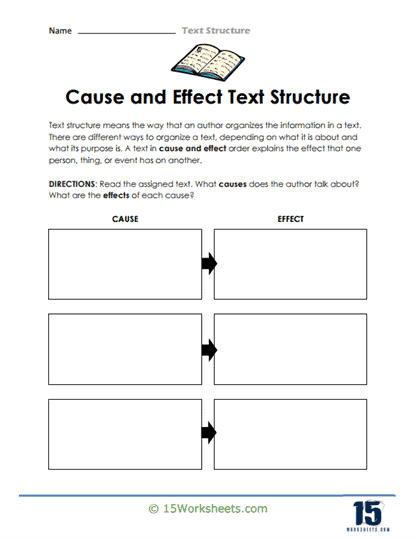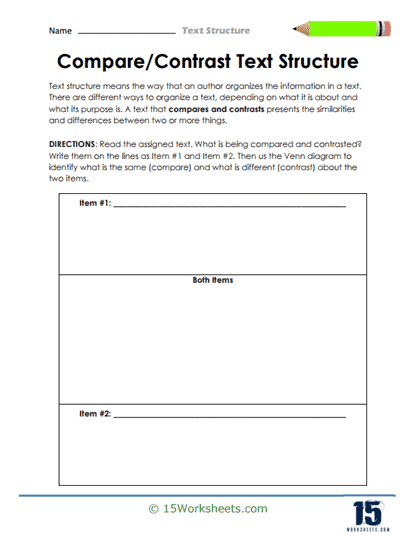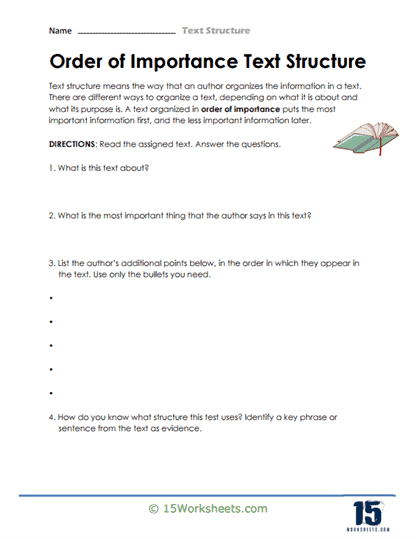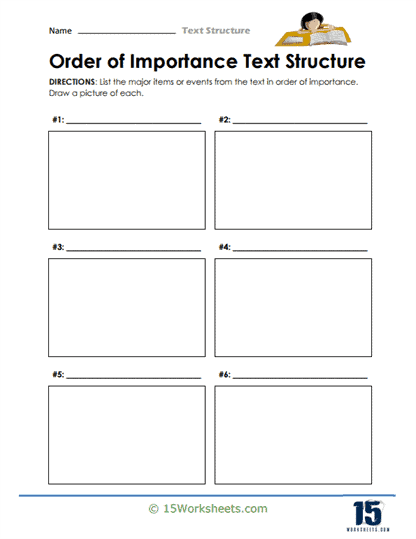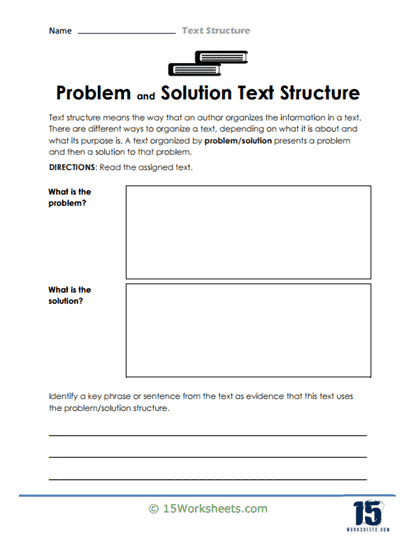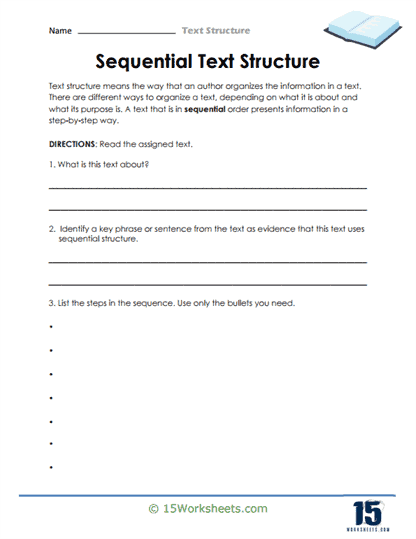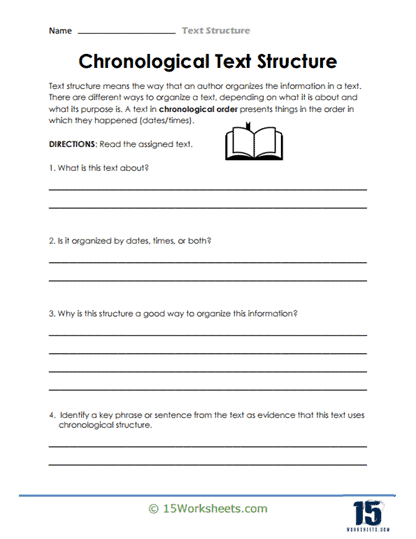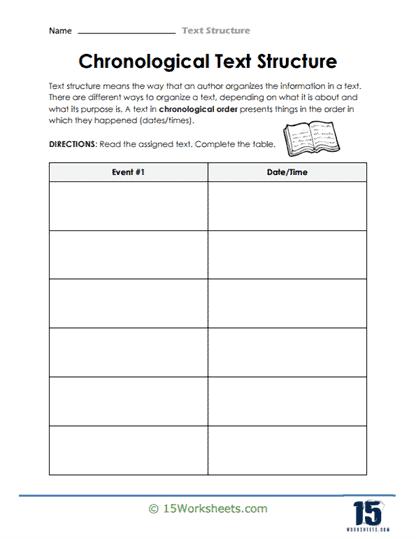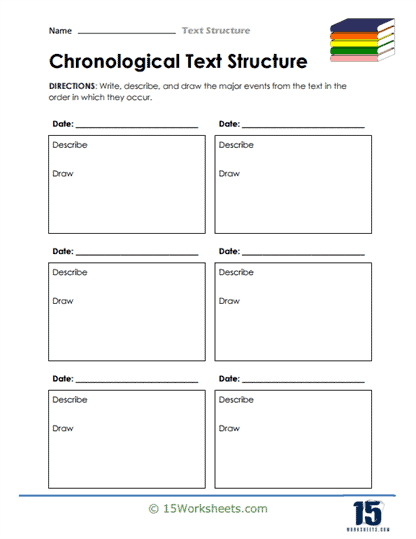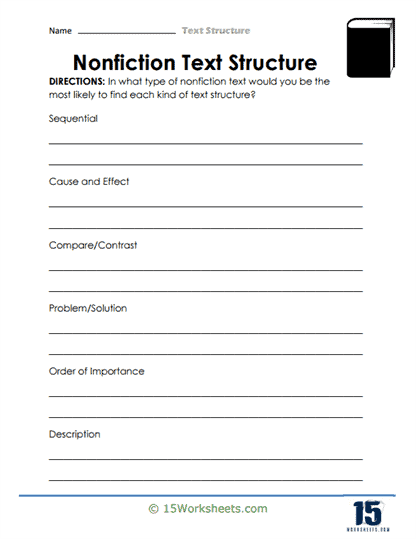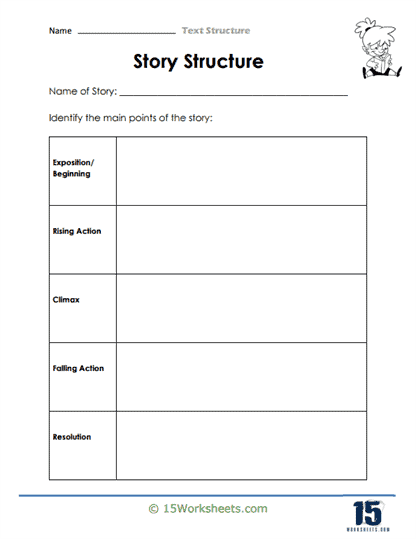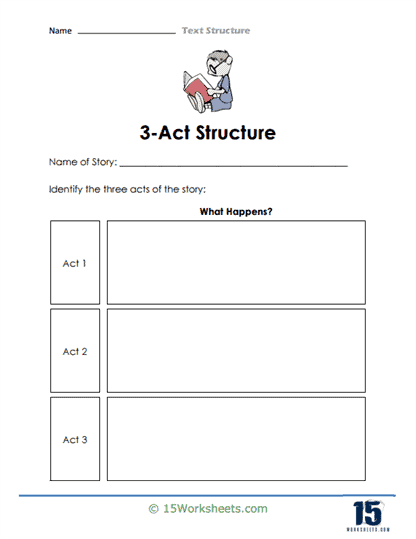Text Structure Worksheets
All About These 15 Worksheets
This series of 15 worksheets offers a comprehensive and engaging resource designed to help students unravel the intricacies of text structure. These meticulously crafted worksheets provide a systematic approach to understanding and analyzing various text structures, empowering students to enhance their reading comprehension and writing skills.
Each worksheet focuses on a specific text structure, enabling students to explore and practice the unique organizational patterns utilized by authors. From cause and effect to compare and contrast, order of importance to problem and solution, sequential to chronological, descriptive to nonfiction, and even 3-act structure and story structure, this series covers a wide range of text structures found across various genres. Through these worksheets, students will:
- Identify key elements, discern relationships between ideas, and develop an understanding of how information is presented within each structure;
- Practice organizing information based on the given structure, reinforcing their understanding and application of effective organization in their own writing;
- Analyze how different genres utilize specific structures to engage readers and convey information effectively;
- Broaden their understanding of text structures and their versatility across different types of texts;
- Learn the importance of exposition, rising action, climax, and resolution, as well as character development, plot progression, and conflict resolution;
- And develop clarity, coherence, and logical progression of ideas in their writing.
This series equips students with the skills necessary to comprehend, analyze, and effectively utilize text structures in their reading and writing endeavors. By mastering the art of organizing information, students enhance their reading comprehension, critical thinking, and written communication skills across various genres and text types.
Whether used in language arts classrooms, writing workshops, or as part of independent study, these Text Structure worksheets provide a valuable resource for students to become proficient in understanding and employing text structures.
What Is Text Structure in Literature?
In literature, text structure is the organization of a piece of writing. It includes how the story is told, as well as the overall arc of the plot.
The choice of text structure can greatly impact how a story is received by readers. For example, a linear story will generally be easier to follow than a nonlinear one. However, a nonlinear story can offer more opportunities for surprises and suspense.
Ultimately, the best text structure for a particular piece of work will be determined by the author’s goals and the nature of the story itself.
The Different Types of Text Structures
There are various ways to organize a piece of writing, and each one can be effective in its own way. In literature, writers often use certain text structures to achieve specific effects.
For example, cause-and-effect text structures are often used to build suspense or show the consequences of a character’s actions.
On the other hand, chronological text structures can be used to create a sense of history or provide a clear overview of a complicated series of events.
In addition, many pieces of literature use compare-and-contrast text structures to highlight the similarities and differences between two concepts or characters.
By understanding the different types of text structures and how they can be used effectively, readers can get more out of their reading experiences.
Most readers are familiar with the basic structure of a story: there is a beginning, middle, and end. However, this is not the only way to organize a piece of writing. In fact, many authors use alternative forms of text structure to add interest and variety to their work.
Below are five benefits of using text structure in literature:
1. Text Structure Can Add Intrigue and Suspense
Organizing a story using an unexpected structure can add an element of mystery or suspense. For example, rather than starting at the beginning and working chronologically towards the end, an author could start in the middle or even at the end and then fill in the missing pieces later. This can leave readers guessing and eager to find out what happens next.
2. Text Structure Can Create a More Immersive Experience
Experimenting with text structure can help authors to create a more immersive reading experience for their audience. For instance, rather than simply describing events as they happen, an author could choose to write from multiple character perspectives or use flashbacks and flash-forwards to give readers a deeper understanding of the story.
3. Text Structure Can Highlight Different Aspects of the Story
The way a story is structured can also be used to highlight certain themes or elements. For example, if an author wanted to focus on the idea of change, they could use a before-and-after text structure, showing characters before and after experiencing some sort of transformation. Alternately, a cause-and-effect text structure would emphasize the relationship between different events in the story.
4. Text Structure Can Make a Story More Memorable
Bucking conventions can also make a story more memorable for readers. An unconventional text structure can help a story stand out and stay with readers long after they have finished reading it.
5. Text Structure Adds Variety and Interest
Not only does it provide suspense, but it also keeps people engaged in what they are reading. It eliminates boredom by making things more interesting. When things are set out in a different way, it catches your eye more.
All these reasons show why breaking away from traditional storytelling techniques and adding some structure to them can be helpful and effective.

